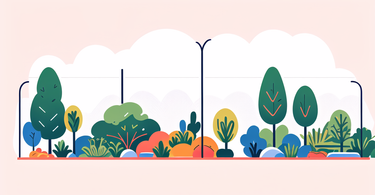Understanding the Urban Garden Ecosystem
The Importance of Space Optimization in Small Gardens
In urban areas, space is often at a premium. This makes optimizing every inch crucial for gardeners. Small gardens can be just as productive and beautiful as larger ones with the right planning. The key is to use vertical space and multi-functional elements.

Garden beds and fences are two essential components that can be combined effectively. This combo can maximize growing area while also providing structure and privacy. By thinking creatively, urban gardeners can turn limitations into opportunities for unique designs.
Efficient use of space allows for a greater variety of plants. It also creates a more inviting outdoor living area. With smart planning, even the tiniest garden can become a lush oasis in the city.
Balancing Aesthetics and Functionality in Limited Spaces
Creating a beautiful and functional small garden requires careful planning. Every element should serve a purpose while also contributing to the overall look. Fences and garden beds can be designed to do both.
A well-designed fence can act as a trellis for climbing plants. This adds greenery without taking up ground space. Garden beds can be built with attractive materials that complement the home's architecture. Raised beds can double as seating areas with the addition of wide edges.
Color and texture play important roles in small gardens. Using a cohesive color scheme can make the space feel larger and more unified. Mixing different textures adds visual interest without cluttering the area.
Innovative Garden Bed and Fence Designs
Space-Saving Solutions for Garden Beds
Vertical garden beds are a game-changer for small spaces. Wall-mounted planters can turn bare fences into lush green walls. Tiered beds make use of vertical space while creating a striking visual effect.

Hanging baskets and window boxes add growing space without taking up ground area. These can be attached to fences or walls to create layers of greenery. Stackable planters are another versatile option for small gardens.
For those with limited mobility, raised beds offer easier access. These can be built at various heights to accommodate different needs. Keyhole gardens are a unique design that maximizes space and minimizes water use.
Fence Designs that Enhance Small Garden Spaces
Fences in small gardens should do more than just mark boundaries. They can become integral parts of the garden design. Living fences made of plants like bamboo or hedges add privacy and greenery in one.
Gabion fences filled with stones or recycled materials create unique textures. These can be used as retaining walls for raised beds. Horizontal slatted fences can be fitted with planter boxes or hanging pots.
Modular fence systems allow for easy customization. Panels can be added or removed as needed. Some designs incorporate built-in planters or shelves for decorative items.
Case Studies: Successful Urban Gardening Projects
How Effective Garden Planning Can Transform Small Spaces
A case study from Seattle shows how a 400 sq ft backyard was transformed. The homeowners used a combination of raised beds and vertical planters. They installed a living fence of espaliered fruit trees along one side.

The result was a productive garden that yielded fresh produce year-round. The vertical elements made the space feel larger and more private. Careful plant selection ensured continuous blooms throughout the seasons.
Another example from Chicago demonstrates the power of multi-functional design. A small patio garden used modular fence panels with built-in planters. These created privacy while also providing growing space for herbs and flowers.
Urban Gardening Success Stories: Before and After
A tiny New York balcony became a lush oasis with clever use of vertical space. Before, it was a bare concrete slab. After, it featured a green wall of succulents and trailing vines. Container gardens lined the railing, maximizing every inch.
The transformation not only beautified the space but also improved air quality. It created a cool microclimate in the hot summer months. The owners reported feeling more connected to nature despite living in the heart of the city.
In Boston, a narrow side yard was turned into a productive vegetable garden. Raised beds were built along the fence line. Trellises were added for climbing plants like peas and beans. The once-neglected space now provides fresh produce and a peaceful retreat.
These success stories show that with creativity and planning, any urban space can become a thriving garden. By combining garden beds and fences, city dwellers can create their own green havens. These gardens not only beautify neighborhoods but also contribute to urban sustainability.
